
Prominent law enforcement, public safety, and emergency response organizations held a press event outside the Federal Communications Commission (FCC) on Monday, November 18th at the opening of a Commission workshop on e911 location accuracy.
Up to two-thirds of emergency calls made over a cell phone lack critical information about the caller’s location, prompting an advocacy group to call the current situation a crisis.
“If you use a cell phone, you probably think that a 9-1-1 operator can find you if you call in an emergency. Unfortunately, that assumption could be fatally flawed,” said Jamie Barnett, former Chief of the FCC’s Public Safety and Homeland Security Bureau and director of the Find Me 911 Coalition. “For two-thirds of wireless callers in some counties, the emergency call arrived without accurate information on the caller’s location, putting lives at risk when callers don’t know or can’t share their location. The FCC should take immediate action to ensure that all 9-1-1 callers can be immediately located in a crisis, whether indoors or outside, in a rural or urban setting.”
The wireless industry’s lobbying group says the problem is complicated and overblown, and the nation’s biggest cell phone companies are placing the responsibility for the problem on poorly trained 9-1-1 operators. But while the issue is debated, lives are being lost. It’s a growing problem, says the Coalition, because 70 percent of all calls to 9-1-1 now come from cellphones. High-powered smartphones with the latest technology can support thousands of apps, streaming video, help travelers find their way home, and access data at megabit speeds, but when you are in a car or building, your wireless carrier might not be able to pinpoint your exact location and share it with emergency personnel until it is too late.
 Deanna Cook of Rylie, Tex is just one victim who might still be alive today if 9-1-1 operators could have tracked her precise location. Last August, Cook called 9-1-1 from her home but was too badly injured in a domestic violence incident to provide her address. Operators relied on the current system to access her location. It took just a few seconds to find the cell tower Cook was accessing to place the call. Shortly after that, Cook’s street and general location became available in about a block-wide circumference, part of what the industry calls “Phase One” data. But the operator had to wait nine minutes for Cook’s wireless provider to finally pinpoint what they believed to be her exact address, the critical “Phase Two” data that can bring help to the right door.
Deanna Cook of Rylie, Tex is just one victim who might still be alive today if 9-1-1 operators could have tracked her precise location. Last August, Cook called 9-1-1 from her home but was too badly injured in a domestic violence incident to provide her address. Operators relied on the current system to access her location. It took just a few seconds to find the cell tower Cook was accessing to place the call. Shortly after that, Cook’s street and general location became available in about a block-wide circumference, part of what the industry calls “Phase One” data. But the operator had to wait nine minutes for Cook’s wireless provider to finally pinpoint what they believed to be her exact address, the critical “Phase Two” data that can bring help to the right door.
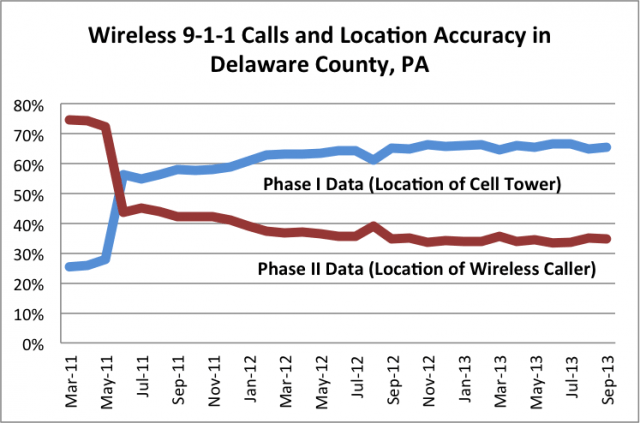
The call location problem is growing worse in this Pennsylvania county.
The Dallas Morning News discovered while Cook was pleading for her life on 9-1-1 tapes, responding officers didn’t arrive until 50 minutes after the call was placed and then left when no one answered the door, perhaps uncertain about the veracity of the address given to them. Cook’s body was found two days later by relatives. Her ex-husband was eventually arrested and faces murder charges.
It isn’t an isolated incident, Lt. Midge Boyle of the Dallas police told the newspaper.
Dallas’ emergency call center, like many around the country, has seen an increase in the number of calls in which 911 call takers have to spend precious time trying to get the caller’s location, and what operators do receive from cell phone providers isn’t always correct.
“It’s time-consuming,” Boyle said. “In an emergency when minutes count, it’s a challenge.”
In Delaware County, Penn., new data from the Federal Communications Commission shows despite all the wireless network improvements taking place, problems locating callers are actually getting worse.
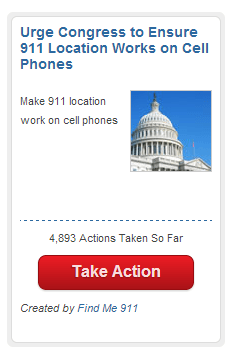 The Coalition notes the FCC’s data shows an alarming drop in more accurate “Phase Two” data from 75 percent of all wireless calls placed during March 2011 to just 35% in September of this year.
The Coalition notes the FCC’s data shows an alarming drop in more accurate “Phase Two” data from 75 percent of all wireless calls placed during March 2011 to just 35% in September of this year.
Countywide data released by the FCC found that 489,726 of the wireless calls received since April 2011 lacked accurate “Phase Two” location information, despite FCC regulations requiring accurate location data be provided with all calls. In most cases, the 9-1-1 call center only received basic “Phase One” data showing the location of the cell tower from which the call originated, information of little use to emergency responders given the large area covered by each tower.
California regulators named names of providers deficient in providing reliable location data in that state:
- AT&T provided Phase Two location data 20 percent of the time;
- Sprint managed to deliver accurate data 21 percent of the time;
- T-Mobile USA only managed to offer correct information 10 percent of the time;
- and Verizon Wireless scored the highest, but only to the extent it delivered Phase Two location data 37 percent of the time in California.
The Coalition wants the FCC to require more advanced and accurate location technology. A whole range of solutions exist that could pinpoint a 9-1-1 caller even within a downtown office building 70 floors high. Among them:
- Advanced Forward Link Trilateration (AFLT);
- Observed Time Difference of Arrival (O-TDOA);
- RF Pattern Matching;
- Terrestrial Beacon Transmitters;
- and Uplink Time Difference of Arrival (U-TDOA)
The CTIA – The Wireless Association said it was willing to sit down with public safety organizations to discuss the problem, but little more. Barnett hopes the FCC will act more quickly. The Coalition is hoping public support will help nudge the FCC to give the issue priority attention. The group has set up a webpage to help the public draft letters to members of Congress.
[flv]http://www.phillipdampier.com/video/ABC GMA Murder Victims Husband Fights to Improve 911 System 11-13.flv[/flv]
ABC’s “Good Morning America” talked with Nathan Lee, husband of Denise Amber, who was kidnapped and murdered in 2008. Lee advocates an overhaul of the cell phone network after law enforcement failed to find Denise even after she covertly used her attacker’s cell phone to call 9-1-1 for help. “Denise should be alive today had the Local 9-1-1 system performed to every citizen’s expectation.” (1:59)
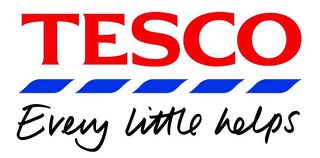 Can you drop by your local supermarket and walk out with a year of free home broadband service? In the United Kingdom, Tesco shoppers can.
Can you drop by your local supermarket and walk out with a year of free home broadband service? In the United Kingdom, Tesco shoppers can.

 Subscribe
Subscribe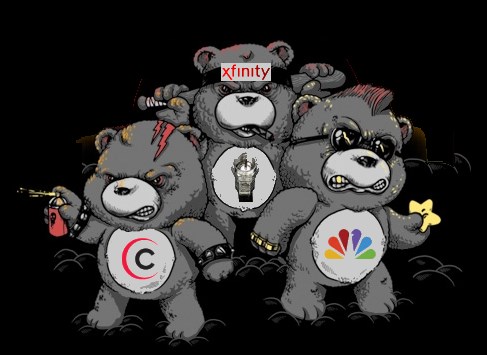
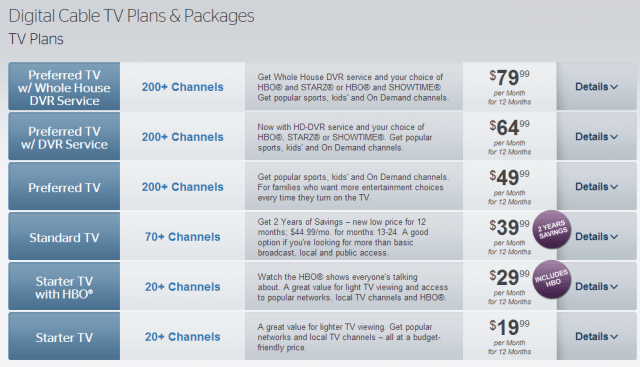
 Local ABC, CBS, NBC, FOX, PBS, and CW stations;
Local ABC, CBS, NBC, FOX, PBS, and CW stations;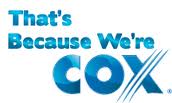 Cox Communications is contemplating jumping into the bidding for
Cox Communications is contemplating jumping into the bidding for 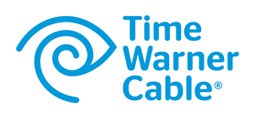 Cox and Cablevision, the nation’s two largest privately held or controlled cable companies, have both been mentioned as targets for takeover in a rush to consolidate the cable industry. Cablevision has been rumored to be on the verge of selling for years, but the Dolan family that founded the cable operator has the final say. Cox previously indicated it had no intention of selling, preferring to explore buying opportunities.
Cox and Cablevision, the nation’s two largest privately held or controlled cable companies, have both been mentioned as targets for takeover in a rush to consolidate the cable industry. Cablevision has been rumored to be on the verge of selling for years, but the Dolan family that founded the cable operator has the final say. Cox previously indicated it had no intention of selling, preferring to explore buying opportunities.
 Deanna Cook of Rylie, Tex is just one victim who might still be alive today if 9-1-1 operators could have tracked her precise location. Last August, Cook called 9-1-1 from her home but was too badly injured in a domestic violence incident to provide her address. Operators relied on the current system to access her location. It took just a few seconds to find the cell tower Cook was accessing to place the call. Shortly after that, Cook’s street and general location became available in about a block-wide circumference, part of what the industry calls “Phase One” data. But the operator had to wait nine minutes for Cook’s wireless provider to finally pinpoint what they believed to be her exact address, the critical “Phase Two” data that can bring help to the right door.
Deanna Cook of Rylie, Tex is just one victim who might still be alive today if 9-1-1 operators could have tracked her precise location. Last August, Cook called 9-1-1 from her home but was too badly injured in a domestic violence incident to provide her address. Operators relied on the current system to access her location. It took just a few seconds to find the cell tower Cook was accessing to place the call. Shortly after that, Cook’s street and general location became available in about a block-wide circumference, part of what the industry calls “Phase One” data. But the operator had to wait nine minutes for Cook’s wireless provider to finally pinpoint what they believed to be her exact address, the critical “Phase Two” data that can bring help to the right door.
 The Coalition notes the FCC’s data shows an alarming drop in more accurate “Phase Two” data from 75 percent of all wireless calls placed during March 2011 to just 35% in September of this year.
The Coalition notes the FCC’s data shows an alarming drop in more accurate “Phase Two” data from 75 percent of all wireless calls placed during March 2011 to just 35% in September of this year.